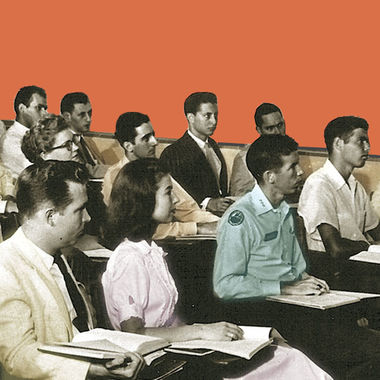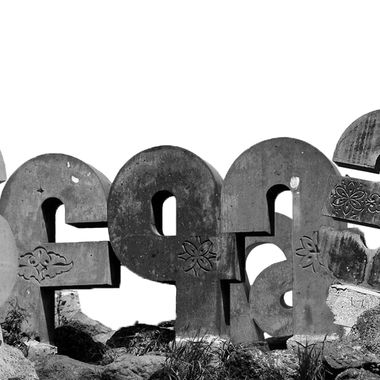
Կարդալ հայերեն
A spectre is haunting Armenia - the spectre of distance (online) education in times of COVID-19.
Starting on Monday, March 16 and for another month, Armenian schools, preschools and other educational institutions are in a national shutdown following the COVID-19 outbreak in the country. The Government’s decree on the State of Emergency specifies that all educational processes in the country stop except for distance education (article 21).
Starting on Monday and earlier, a number of schools (Ayb School, Mkhitar Sebastaci Educomplex, Anania Shirakatsi Lyceum, etc.) announced their online education models on social networks. The Minister of Education, Science, Culture and Sport announced the Ministry would suggest a number of guidelines during a Facebook live on how to cope with the education vacuum at a time of a viral shutdown.
COVID-19 resurrected the need to explore the challenges and opportunities of distance (online) education in the country.
What Is Distance Education?
Bozkurt’s bibliometric examination of 1685 research articles and 51,940 references on distance education from 1916-2018 hints that distance education is about two major intellectual considerations:
1. That distance learning is about learner-learner, learner-instructor and learner-content interactions. Replicating the same 45-60 minute class structure, the same lesson plan online may not lead to the same experience. Recording your session on video and posting on a social network (beyond personal data/security issues) probably does some good but it’s not enough to qualify as distance learning.
2. That distance learning is about cognitive presence, social presence, and teaching presence. Yes, you need teachers for distance learning but how do you meaningfully engage let’s say elementary grade students in a distance process? How do you ensure that students who have joined the online tool are actually present? How do you work with your students and how they interact with their instructor’s online behaviour?
We often assume that once we shift the same lesson from the physical to a technological medium (e.g. teach via Zoom) that lesson turns into a distance learning experience. We also often assume that once technology is used in the classroom (e.g. smart board), the lesson turns into an interactive experience. Neither is true.
Moodle, Google Classroom, Docebo, SAP Litmos, Blackboard, Dasaran - all of these are learning management systems. These are software solutions that help you document, administer, track the learning process. Zoom, Skype, Viber, Microsoft Teams, Google Hangouts are communication tools. Teaching through Moodle with Viber or Zoom does not yet turn you into a distance education provider. Just like using Quizizz for classroom questioning does not improve your questioning skills as a teacher. These are just tools. When pedagogy is not tuned to distance teaching, you are simply conveying the physical lesson to a student through technology but that is not yet distance learning.
Distance education involves technological, pedagogic-educational and socio-economic factors. In other words, if in the face of COVID-19 you shift to distance education, you have to think about who owns the data that students and teachers produce, are all equally equipped for the shift (mobiles and laptops bring different experiences, just like Viber and Zoom do), is the shift creating any inequality (what happens with children who cannot access distance education), what pedagogy is involved, what outcomes are you hoping for, why do you shift to distance education (will that be counted towards final grades or is it a measure to keep children busy) , does a virtual experiment teach the student in the same way the physical one would (e.g. would they know the smell of a chemical substance virtually), what resources are provided to children along the poverty line to cope with distance education requirements, how do we implement inclusive distance education…Any talk on distance education that falls short of considering any of these factors is simple trendy.
Socio-economic factors are key. When you have children that rely on school meals or lack access to the Internet, you are not ready to talk about distance education for all. You can only talk about distance education as a remedy for those above the poverty line. According to UNICEF’s 2016 assessment at least 30% of 0-5 year-olds in Armenia had poor access to food, 87% of rural children had poor access to water and heating, 50% of 0-5 year-olds lived in houses with no access to the Internet.
To conclude, let us not be lured to think that we are able to provide distance education to all at the moment. No matter how exciting the experience of different private and public schools is. What the Ministry is trying to achieve is a certain level of a remedy for a certain percentage of students.
Did We Miss The Train?
The World Bank’s Education Quality and Relevance project (2004-2009) envisioned a loan in the amount of $7.9 mln so that “schools in Armenia have facilities and capacity to integrate a variety of educational technologies as part of teaching and learning.”
The project envisioned:
1. Establishing:
a. The National Center for Educational Technologies
b. An educational portal;
c. Infrastructure for integration of ICT into general education including;
d. Computer labs in about 600 schools in Armenia (out of 1481 at the moment) in a sustainable way through a Computer Revolving Fund;
e. Internet connected School Network for about 150 schools.
2. Supporting:
a. Teachers and students to apply modern teaching and learning methods in schools using ICT and related instructional materials;
b. Provide technical assistance to develop educational software and related software operating manuals and teacher training modules.
Since 2004, however, subsequent administrations have limited the scope of the National Center for Educational Technologies (NCET) to that of an education management data gathering and analysis tool - EMIS. In its Letter of Development Policy to the World Bank, Sergo Yeritsyan, then Minister of Education (2003-2006), stated that Armenia needed the Center to support the Ministry of Education through strategic thinking and planning concerning the improvement of education quality. This gave it a much narrower role to satisfy the Government’s passion for system optimization and need for at least some data from the schools. Since 2004, World Bank loans of 2009 and 2014 have narrowly focused on strengthening the EMIS component. The 2014 loan, for instance, envisioned establishment of technical service mechanisms for the maintenance of hardware and software in Armenian schools; training teachers and non-teaching staff of schools, universities and vocational education and training institutions on the integration of ICT into teaching and learning processes. The loan was, however, restructured.
Armenia could have a National Center for Educational Technologies with a much larger scope than the one it has now. Armenia’s short-sighted governments, however, focused on narrower goals. In other words, we could have been much more prepared for education in times of COVID-19.
Despite this short-sightedness the National Center for Educational Technologies has managed to launch:
-
Education Management Information System (with lots of valuable data)
What Should We Do Now?
Missing the train is only painful if you run after it (Nassim Taleb). Ironically, for the last 17 years we have constantly missed the train and not felt the pain...until COVID-19.
This global pandemic is an opportunity to restart investments for building a proper distance education capacity to be ready for the next crisis.
In the Long-run:
1. Distance on par with common practice. We often assume that teachers are a hardware you can quickly install a software onto, i.e. train to start distance teaching. This is because for the larger public, distance education is still only about the medium. If we care about a viable distance education system, that system needs to be incorporated in every teacher’s and student’s common practice to some degree.
2. Technology revolving scheme. We often rely on the Government budget and donor goodwill to donate Pentium4 to our schools. Caring about distance education means caring about a sustainable scheme that will gradually empower teachers and students with software, hardware, network and pedagogical capacity to meaningfully utilize those.
All of these require a much larger investment for distance education in the country.
Meanwhile:
1. The academic year will have to be prolonged. There is no alternative to this as only that can ensure relatively equal access to learning. Other measures currently are simply ad-hoc remedies to keep some portion of children and teachers busy.
2. We need to fundraise for school meals and hygiene products for children and families socio-economically most vulnerable who are now deprived of it and once the shutdown ends, they will be far behind their peers who did their distance classes.
3. The Ministry of Education needs to assign NCET the official role of coordinating all technology-assisted remedy measures in the country. So there is one coordinator everyone has access to.
4. We need to realize that the exciting examples of private schools that shifted to education via online means are probably replicable in only a number of public schools. Arranging this shift for all public schools will take much longer because of the capacity to utilize ICT.
5. The Ministry needs to prepare two action plans: a) if the viral break lasts for a month and b) if the viral break lasts longer. For the latter we would need differentiated measures.
6. The Government needs to come to an agreement with Internet providers for free access in rural areas during the shutdown. This cost needs to be calculated but it can most possibly fit their PR budgets.
7. Utilize COVID-19 shutdown for as many “distance education” experiments as possible. These will support the lean product development of a working distance education system.
Whatever the solutions, we should not forget that these are ad-hoc remedies, not a distance education system, and a lesson to invest far more. COVID-19 is a chance to start investing more on building a proper distance education capacity to be ready for the next potential crisis.
Imagine not missing the train when the next COVID-19 comes.
COVID-19
COVID-19: Updates From Armenia
EVN Report will be providing regular updates from the Ministry of Health, the World Health Organization and other reliable sources on the situation of COVID-19 in Armenia.
It Has To Be Said: Thy Neighbor
By Maria Titizian
This week’s “It Has To Be Said” editorial looks at the importance of social responsibility amid a pandemic that has rattled almost every country on the planet.
related
How Literate is Armenia?
By Narek Manukyan
Armenians usually boast a 99 percent literacy rate. Different measures, however, reveal another story.
Independence Generation: Education, Societal Aspirations and Implications for Development
By Narek Manukyan
This commentary by Narek Manukyan touches upon some of the key findings about education in a study commissioned by the Friedrich-Ebert-Stiftung called, "Independence Generation - Youth Study 2016." It takes an in-depth look at societal aspirations and how they impact youth within the context of education.
Making Sense of the ‘Controversy’ Behind Education Reforms
By Avnik Melikian
Protests erupted after a draft education reform agenda was publicized that sought to make Armenian language, literature and history courses optional in universities. However, there are a number of other proposed reforms that could potentially undermine the independence of universities that have been left out of the public discourse.









EVN Report welcomes comments that contribute to a healthy discussion and spur an informed debate. All comments will be moderated, thereby any post that includes hate speech, profanity or personal attacks will not be published.